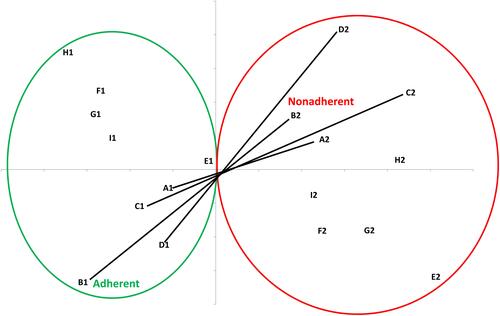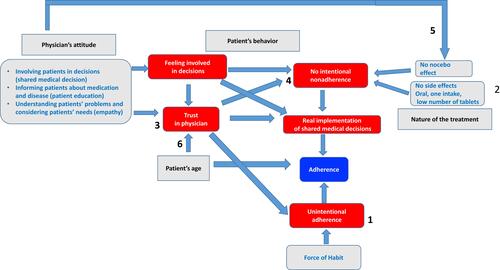Figures & data
Table 1 Univariate Analysis of the Absence of Intentional Nonadherence
Table 2 Univariate Analysis of the Effect of Habit
Figure 1 Multiple Correspondence Analysis. A: Age A1≥ 53/A2<53 years; B: Adherence B1 Adherent/ B2 Nonadherent; C: Do you deliberately not take your medication? C1 Never/C2 other answer; D: Experienced adverse effects D1 No/D2 Yes; E: Generally speaking, when you have got into the habit of doing something, do you stick to it? E1 Yes/E2 No; F: To what extent do you feel involved in decisions about your treatment? F1: Fully/F2: other answer; G: To what extent would you say there is a relationship of trust between you and your GP? G1: Fully /G2: other answer: H: To what extent would you say there is a relationship of trust between you and your specialist? H1: Fully/H2: other answer; I: “I take my medication because I‘m used to taking it.” I1: Fully agree/I2: other answer.

Figure 2 A novel model of patient adherence in taking medications. According to this model, it is possible to improve medication adherence by promoting the use of the habit (1, unintentional adherence), by playing on the nature of the treatment (2). Physician attitudes make the patient feel involved in decisions and has trust in the physician (3). These two factors combat intentional nonadherence (4). Finally, the attitudes of the physician are associated with the presence of a nocebo effect of the drug which also favors the occurrence of intentional nonadherence (5). The effect of age on trusting the doctor could form a facet of the well-known influence of age on adherence (6).

